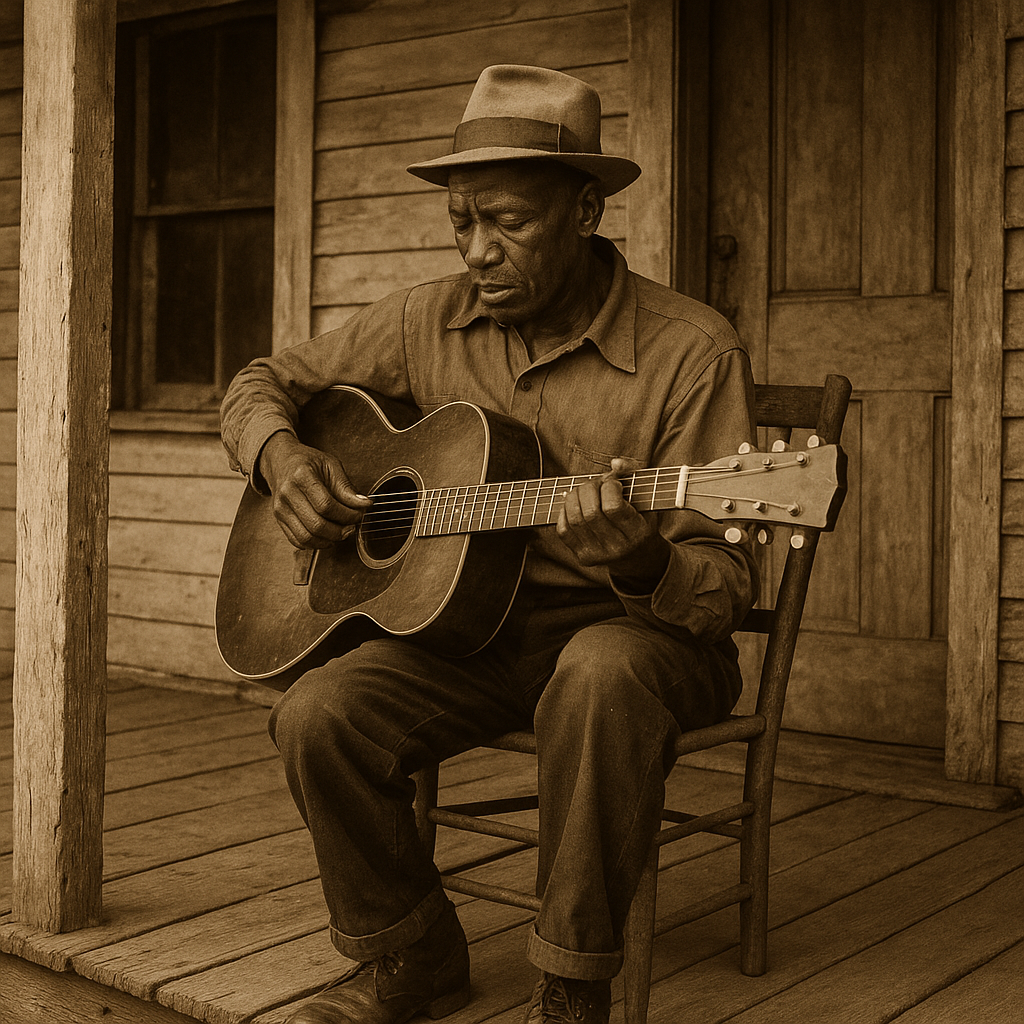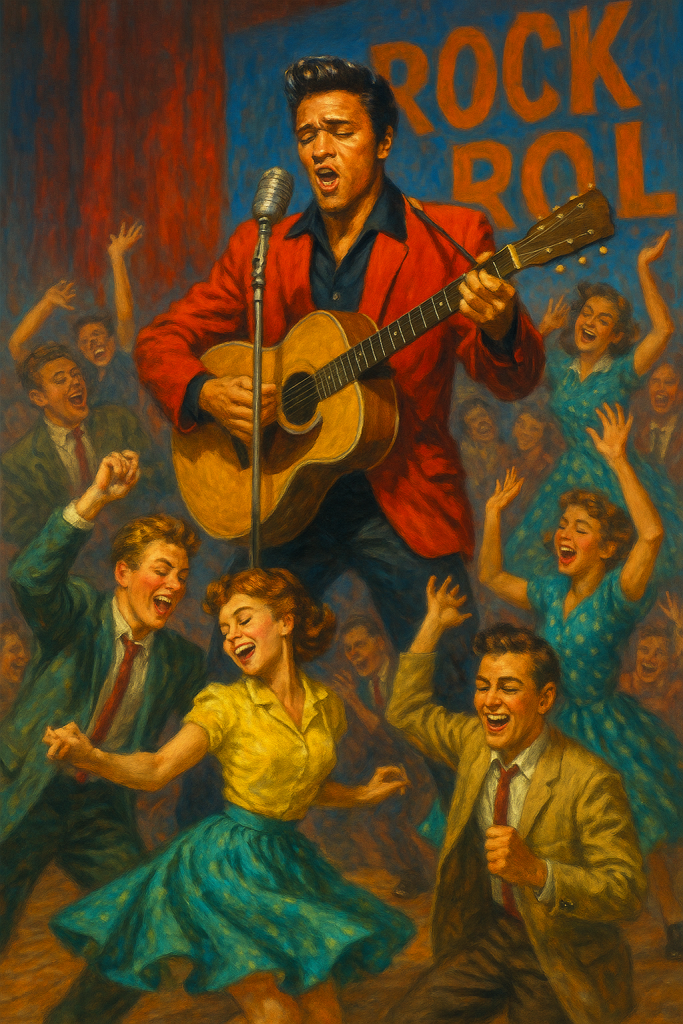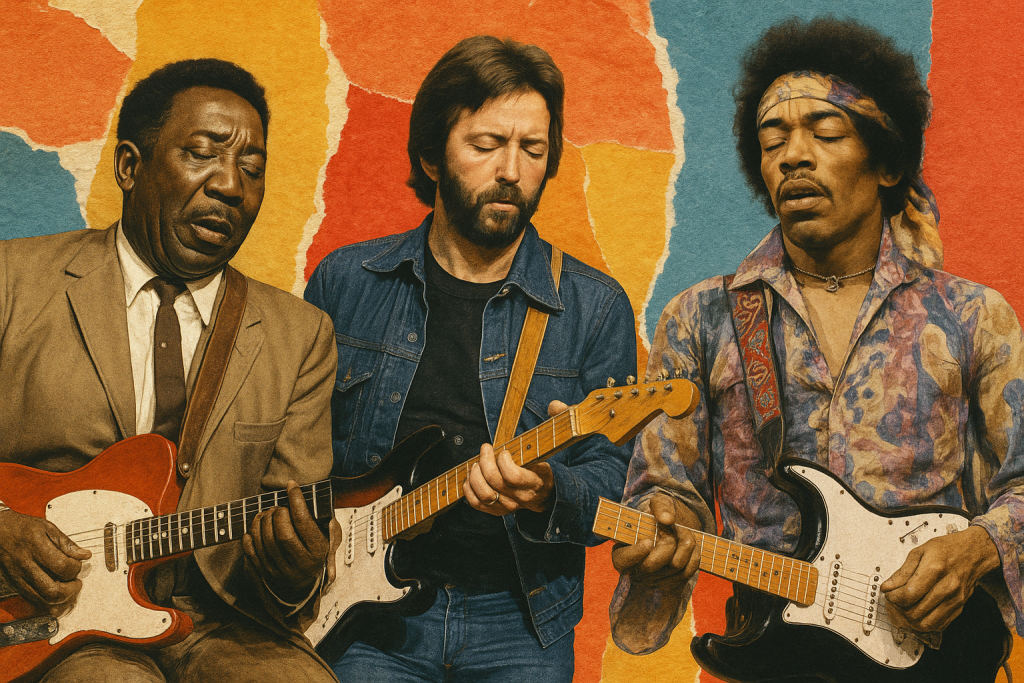Introduction: The Debate Over Blues and Rock
Blues and rock & roll have been used almost interchangeably. Some believe the two cannot be separated. Others hold an opposing view. The debate continues since both genres share common musical elements, but their cultural evolution remains distinct.
Visually, the blues and rock music can be mistaken for one. Both genres involve the use of guitar riffs and focus on rhythm and raw lyrics. While they have similar traits, the two contradict in areas of tempo, audience, and attitude. These differences led to cultural differences and had the two go their separate ways, although their roots remained entwined.
The two genres, blues and rock, are deeply rooted in history. The blues, with its origins in African American life, predates rock and roll. Rock and roll, on the other hand, emerged as a mainstream genre in the 1950s, characterized by high energy and vigorous movements. This is not just a musical debate, but a journey through history.
In this article, we aim to unravel the intricate connection and distinction between blues and rock music. We will explore their origins, musical structures, cultural influence, and the notable musicians who served as a link. By the end, we hope to provide a comprehensive understanding of these two genres, their similarities, and their differences.
To find the answer to this question, we need to look at the very origins of the

Origins of Blues Music
Blues music, known for deep emotional resonance, originated in the Deep South of the United States during the late 19th century. Drawing on African American traditions, the blues were imbued with the work songs, spirituals, and field hollers of enslaved people. This history gave the blues a profound emotional depth and an aura of timelessness.
Delta blues became one of the most influential styles, not only in the United States but also worldwide. Musicians like Robert Johnson, Charley Patton, and Son House, among others, defined the genre with their emotionally raw and guitar-driven performances.Their early recordings became blueprints, guiding future musicians to follow or deviate from the tradition. These recordings influenced artists across the world.
The blues was more than just entertainment. For African Americans, it was a powerful form of expression through which to articulate suffering, endurance, and hope. As such, the blues became a central cultural expression, a poignant reflection of an era of systemic racism and segregation.
The northward migration of African Americans led to the development of urban blues styles. Chicago blues, with its use of electric guitars and amplified harmonicas, gave the music a more powerful sound. This evolution helped the blues to attract larger audiences and to play a more significant role in mainstream culture, permeating various aspects of society.
However, while the blues was born out of struggle and a fight for survival, rock and roll emerged out of other influences.
The Birth of Rock & Roll
Rock and roll burst onto the music scene in the 1950s. It was not, however, an entirely new genre. Rock emerged as a fusion of several types of music, most notably rhythm and blues, gospel, country, and jazz.
Artists such as Chuck Berry, Little Richard, and Elvis Presley became its standard-bearers. Berry’s guitar licks, Richard’s showmanship, and Presley’s boy-next-door appeal resonated strongly with teens and young adults. Rock became a rebellious countercultural anthem for postwar youth, leaving an indelible mark on the cultural landscape.
/row
Unlike the blues, which expressed the trials and tribulations of African American life, rock and roll quickly became a form of popular entertainment. White musicians played rhythm and blues to wide acclaim, making the genre a pop phenomenon. This crossover directly connected to and fueled a profound evolution of black music. This underscores the deep roots of rock and roll.
Rock and roll was faster, louder, and more showy than the blues. Lyrics emphasized a good time, freedom, and nonconformity. Musically, rock and roll drew heavily from the blues, especially its 12-bar form and basic I-IV-V chord progression.
At its core, then, the two genres have much in common, highlighting the continuity and evolution in the history of music.

Musical Similarities Between Blues and Rock
There are many more ways in which blues and rock are similar and therefore sound like they go together. Both genres are typically based on the 12-bar blues, a chord progression forming the backbone of many songs.The use of repetition gives a natural structure that is both catchy and versatile. A vocal line might be answered with a guitar riff, or one instrument could echo another’s pattern.
The second similarity is that both genres use a call and response style. This improvisation not only keeps the music fresh but also infuses it with a raw, emotional charge that resonates with the listener.
In blues and rock, lyrical content is usually focused on love and heartbreak, freedom and rebellion, and other emotional themes. Blues tends to focus on oppression and the daily struggles of life while rock adopted these themes to a wider youthful counterculture revolution. Lyrically, though, both genres share a common thread-they are masterful storytellers, weaving narratives that captivate the listener.
Blues and rock music are also similar in that guitars (and other string instruments) are not just featured, they are the driving force behind the music. Slide guitar work is synonymous with the blues while electric guitar riffs and power chords are defining features of rock. It is not surprising then that both genres also heavily feature soloing as a form of self-expression, adding a powerful, energetic element to the music.
Blues and rock also share a driving rhythm to the music which creates a sense of urgency and allows the songs to be danceable. In addition, the music of African Americans served as a base rhythm to both.
Conclusion: All of these similarities show that there would be no rock and roll without the blues. Their musical structure is virtually the same but their respective messages were quite different.
These differences in the music, presentation, and social perception are exactly what led to their different identities.
Key Differences in Sound and Style
Even while being connected, the two genres are unique in their own ways. Tempo is the first point of departure. Blues tended to have slower rhythms, while rock featured faster tempos.
The instrumentation used was another point of difference. Blues had a reliance on acoustic guitar and harmonica; it later added electric guitar and slide techniques. Rock, by contrast, had a focus on drums, electric amplification, and showy effects pedals.
Emotionally, blues is mournful, hardy, and desirous, with songs often reflecting the struggles of day-to-day life and cultural survival. In contrast, rock is more rebellious, boastful, and liberating, particularly in the eyes of youth. These emotional differences contribute to the unique appeal of each genre.
The vocal styles in blues and rock music also differ significantly. Blues singing is raw and soulful, while rock singing is more about power, volume, and showmanship. This difference in vocal approach contributes to the unique characteristics of each genre.
Lastly, the reception of the two was different. Blues had a smaller and more consistent audience that was rooted in African American culture. Rock had a wider reach and struck a chord with white youth in the mainstream. As a result, it became the dominant commercial force. Thus, reception also helped to solidify the divide between the two genres.
Not only did these genres sound different, but they had separate cultural influences that also sent them on divergent paths.
Cultural Impact of Blues vs Rock
The blues and the rock that grew from it were more than musical movements. The blues was the sound of the African American experience and history, a narrative of struggle, resilience, and hope. It was a way to feel better through music, a form of catharsis for a community facing oppression. Rock was a way for a dissatisfied, postwar generation to express their frustration.
Songs in the blues idiom often carried a tone of survival. The people who listened to the blues understood its cultural heritage. Rock, on the other hand, transcended racial and socioeconomic boundaries, becoming a universal language of youth culture that resonated worldwide.
Rock’s appeal to a wide audience made it more commercially successful in the 1960s. The Beatles, the Rolling Stones, and others built their careers on blues and rock, helping to popularize both genres. The blues never faded away, though. Rock’s popularity only increased its fanbase. Some of these fans rediscovered the blues, which was enjoying a comeback.
In many cases, the artists themselves embodied both
Artists Who Bridged Blues and Rock
Muddy Waters, a luminary in both the blues and rock, left an indelible mark on the music world. His famous quote, “The blues had a baby, and they named it rock and roll,” Encapsulates his role in electrifying the blues and inspiring rock bands for generations.
Eric Clapton, a pioneer in his own right, carried the blues tradition into rock with the Yardbirds, Cream and his solo work. Jimi Hendrix, with his innovative blend of psychedelic rock and deep blues phrasing, also pushed the boundaries. Their work demonstrated the thrilling potential of each genre to cross-pollinate.
The Rolling Stones and Led Zeppelin, two iconic rock bands, significantly contributed to the popularity of blues. They didn’t shy away from covering or even copying blues classics, thereby introducing them to international audiences and ensuring the survival of blues in the rock and roll age.
These are just a few examples, and today there are modern musicians who explore this crossover.

\
Modern Perspectives in Blues and Rock
Contemporary music demonstrates that the blues and rock genres are not completely separate. Musicians such as Gary Clark Jr. and Joe Bonamassa fuse blues with a rock edge, incorporating elements like distorted guitar tones and heavier drum beats. Meanwhile, Samantha Fish and Christone “Kingfish” Ingram continue the crossover tradition.
The festival scene and streaming services also cross-pollinate fans of both styles. Many younger listeners discover how rock was influenced by blues, often leading to an appreciation of both genres. Moreover, tribute albums and artist collaborations underscore the vibrant and ongoing conversation between blues and rock, engaging fans in a dynamic cultural exchange.
So while the two are distinct, they still have an intriguing and interconnected impact on one another, sparking interest in the complex relationship between blues and rock.
This brings us back to our main question—are blues and rock & roll the same?
Conclusion: Two Genres, One legacy
Blues is not rock and roll, but you can’t have one without the other.
The blues was the foundation that would become a building. Rock and roll blew open the doors and amplified it to the world.
They share a multitude of elements like song structure, lyrical content, and groove. But when it comes to speed, attitude, and cultural influence, the differences become two separate styles.
What can’t be argued is this: without the blues you cannot have rock and roll.
Instead of asking if they are the same, see them as partners from different eras, leaving a rich legacy
Grab some old school blues records and some early rock classics. Listen to them both and you’ll find each has the same heartbeat. Now go and find some contemporary artists who continue to blur the lines of both, such as The Black Keys or Gary Clark Jr. You’ll see how the blues and rock are more linked together than most people realize, influencing the past, the present, and the future.
